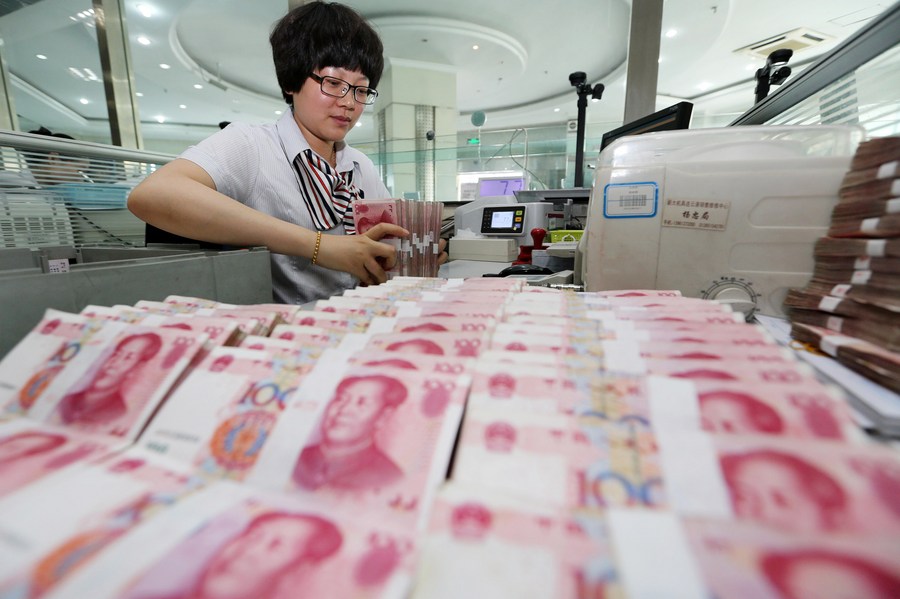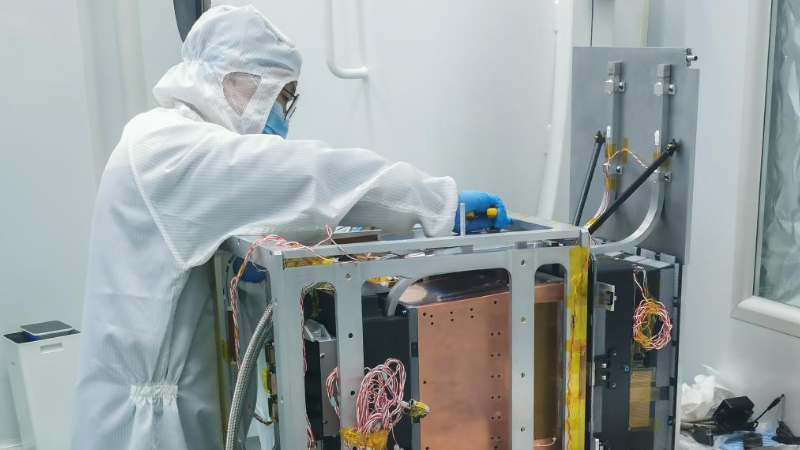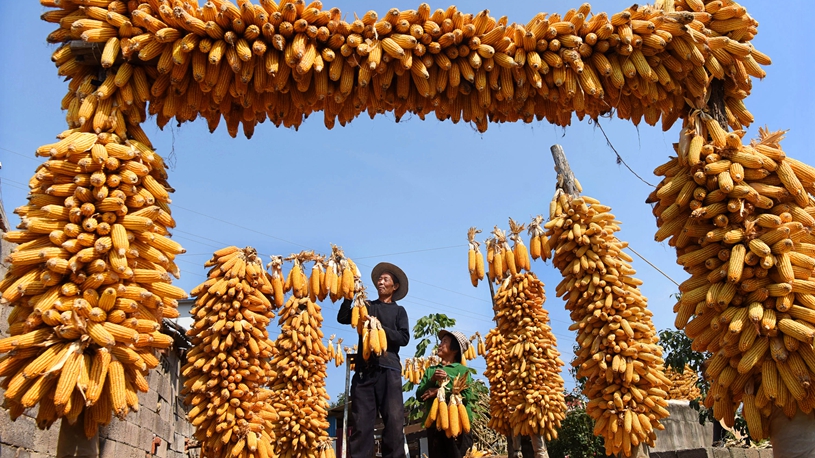
File photo shows a worker counts Chinese currency renminbi at a bank in Lianyungang, east China's Jiangsu Province. (Xinhua/Si Wei)
BEIJING, Oct. 11 (Xinhua) -- With solid efforts to promote yuan internationalization, China has seen a strengthened role of renminbi (or RMB) across the board, from international payment and settlement, investment and financing, and reserves to pricing.
The People's Bank of China (PBOC), the country's central bank, published an article Sunday, saying it will steadily advance the currency's internationalization and make it more convenient to use the yuan in cross-border trade and investment.
The following are some facts, figures, and policy priorities of the central bank in prudently boosting the yuan's international usage.
REMARKABLE PROGRESS
After decades of development, the RMB has shown vigorous vitality and secured more global visibility. Currently, nearly half of all cross-border transactions conducted by Chinese financial institutions, enterprises, and individuals are settled in the renminbi.
With the RMB exchange rate becoming more flexible and two-way fluctuations becoming the norm, market players have a stronger intention to use RMB in cross-border trade and investment to reduce currency mismatch risks.
China's cross-border RMB receipts and payments in non-banking sectors reached 27.8 trillion yuan (about 3.91 trillion U.S. dollars) from January to August, up 15.2 percent year on year, according to data from the central bank.
Thanks to the opening up of China's financial market, the yuan has played a bigger role in investment and financing. The share of securities investment in cross-border RMB receipts and payments increased from about 30 percent in 2017 to around 60 percent in 2021. Since 2017, RMB bonds have been included in three international bond indexes.
In recent years, the need for the world's central banks to hold renminbi reserves has increased significantly, thanks to the diversification trends of reserve assets and the inclusion of the renminbi in the International Monetary Fund's Special Drawing Rights basket.
The share of the Chinese yuan in the Special Drawing Rights basket has risen from 10.92 percent in 2016 to 12.28 percent in May 2022, reflecting a growing recognition worldwide of the improvement in the free use of the renminbi.
In the process of renminbi internationalization, China upholds the principle of letting the market be the driver and pursues mutual benefits and win-win cooperation. The PBOC said that using RMB in neighboring countries and Belt and Road countries has injected impetus into local economic development.
FUTURE OUTLOOK
In the future, the central bank will strengthen coordination between domestic and foreign currencies, facilitate market entities to use RMB more, and promote innovation in RMB cross-border investment and financing.
It also pledged to improve the liquidity of renminbi-denominated assets, simplify the process for foreign investors to enter the Chinese market, and enrich the types of investable assets.
More efforts will be made to explore cooperation on local currency settlement with the ASEAN (Association of Southeast Asian Nations) countries and neighboring countries, promote direct trading between RMB and relevant currencies, and support overseas countries and regions in developing local RMB foreign exchange markets.
The central bank will also improve the offshore RMB liquidity supply mechanism and give full play to the positive role of clearing banks in cultivating the offshore RMB market.
Currency internationalization is a long-term process and a result of improved overall national strength as well as financial development, the PBOC noted.
The RMB is inevitably becoming a global currency as China grows stronger and deepens its reform and opening up. Meanwhile, a rising international status of the yuan also reflects the international community's confidence in China's economic development, said the PBOC. ■












